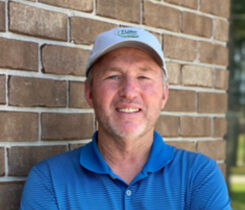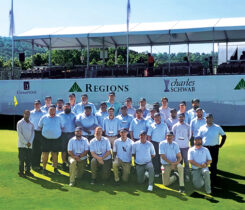Kyllinga species a challenge to control

Clark Throssell
Clark Throssell, Ph.D., discusses why kyllinga species are a challenge to control with Scott McElroy, Ph.D., a turfgrass weed scientist at Auburn University. He conducts numerous weed control experiments every year, targeting many weeds species, including kyllinga species. You may reach him at jsm0010@auburn.edu for more information.
Q: What are the most troublesome kyllinga species on golf courses in your area?
In Alabama, the most troublesome kyllinga species are green kyllinga (Kyllinga brevifolia), false green kyllinga (Kyllinga gracillima) and cockscomb kyllinga (Kyllinga squamulata). Of these three species, cockscomb kyllinga is the most difficult problem.
In addition to the kyllinga species, there also are several species of annual sedge that can be a problem in turf in some areas.
Q: What is the life cycle of these species, and is there a weak point in the life cycle when they can be easily controlled?
We are only beginning to learn the details of these species and how they behave in turf. Based on what we know today, green kyllinga and false green kyllinga both are perennials that spread by seeds and rhizomes. The seeds are viable and may be the mechanism of transfer from one location to another, while rhizomes allow green and false green kyllinga to spread and form dense mats once they become established on a site. Green and false green kyllinga are found on greens, tees, fairways and rough.
Cockscomb kyllinga is an annual and spreads by seeds. It does show some characteristics of behaving as a short-lived perennial under certain conditions. Cockscomb kyllinga is found in fairways and rough.
We have not identified a weak point in the life cycle of any of these species that can be exploited to make control more effective. There is not a period of definitive seed germination, which makes using preemergent herbicides a challenge. Kyllinga seeds will germinate from mid-April to August, with the bulk of seeds germinating in June and July.
Q: Why have kyllinga species become more of a problem the last 15 to 20 years?
The duration and intensity of high summer temperatures have increased, which creates growing conditions favorable for kyllinga species. These species used to be found only in coastal areas of Alabama 20 years ago and are now found throughout the state. It’s not clear how the kyllinga species are being spread throughout the state.
Q: Are there any cultural practices to help control kyllinga species?
Kyllinga species grow best in wet areas, so improving drainage will help reduce the problem in wet areas, and reducing thatch also will reduce the kyllinga population. Other than that, we have not identified any other cultural practices to help control kyllinga species.
Q: What herbicide strategies work well to control kyllinga species?
Traditional preemergent herbicides work well to control kyllinga species, but the challenge is the long time period during which kyllinga seeds germinate. Two applications of a preemergent herbicide to control crabgrass and goosegrass also will control kyllinga species, but when the effectiveness of those two applications wanes, the kyllinga species seeds will germinate.
An effective control strategy is to apply two applications of a traditional preemergent herbicide in spring and around June 1, or as soon as superintendents see kyllinga species starting to germinate, apply a third application of a preemergent herbicide in combination with a postemergent herbicide labeled for kyllinga control.
As the growing season progresses, keep scouting for just-emerged, small kyllinga plants and apply a postemergent herbicide as needed.
Q: Is there anything else you would like to add?
For long-term control of kyllinga species, work diligently to prevent the kyllinga species from producing seed. It’s possible to get a large infestation of kyllinga species under control using a sound herbicide control program and being persistent. Once kyllinga species are present on a golf course, herbicides are needed every year to prevent large infestations from recurring.












